Like many festivals in India, Karwa Chauth is based on the Lunisolar calendar which is based on astronomical positions of planets, especially positions of the moon and is used as a marker to calculate important dates. This festival falls on the fourth day after the full moon, in the Hindu month of Kartik. Most of North India celebrates the festival and it involves fasting from sunrise to moonrise by married women. While the Hindi film industry has glamourised and sometimes caricatured the festival, it is interesting to know the true beginnings.
Indian festivals have their origins from mythology and seasons play a big part too and it is with Karwa Chauth too. The origins are from north-western India but thanks to the advent of films and television this festival has take over world stage.
I had a conversation to Dr. Kavita Lohiya Bajpai, an eminent educationist, who has been celebrating this day with close friends for many years and she told me some not so well known facts associated with the day.

It appears that the festival had it’s beginning, when girls who were barely in their teens were sent off to another town or village and they felt as if they were amongst strangers. At that tender age, if there was ever a need to share anything, there was no confidante where she could share her problems. Moreover, these were times when there was no telecommunication either. With her parents and relatives living far away, this was proving to be a challenge to newly-wed girls.
Hence the custom started that when a bride would reach her in-laws, she would befriend another woman who would be her ‘kangan-saheli‘ or sister ‘dharam-behn‘ for life. Their friendship would be sanctified through a small Hindu ceremony during the wedding. The bride’s friend would usually be of the same age or slightly older and married into the same village. She was also not directly related to the bride’s in-laws, which made sure that there was no conflict of interest later. This tradition evolved for the emotional and psychological well-being of the bride that she could talk to someone other than the family she was married into. This tradition would go a long way in seeking help, if there was any issue within the marriage or with the in-laws. Moreover, the bride’s parents would treat her friend just like their own daughter.
Thus Karva Chauth started as a festival to celebrate this special bond of friendship between the brides and their ‘kangan sahelis‘ . The practice of praying and fasting for the husband came much later as the kangan sahelis decided to celebrate their marriage and the well-being of their husbands together through fasting and prayer.
A few days before Karva Chauth, married women would buy new karvas (spherical clay pots) and paint them on the outside with beautiful designs. Inside they would put bangles and ribbons, home-made sweets, cosmetics, and small clothes.
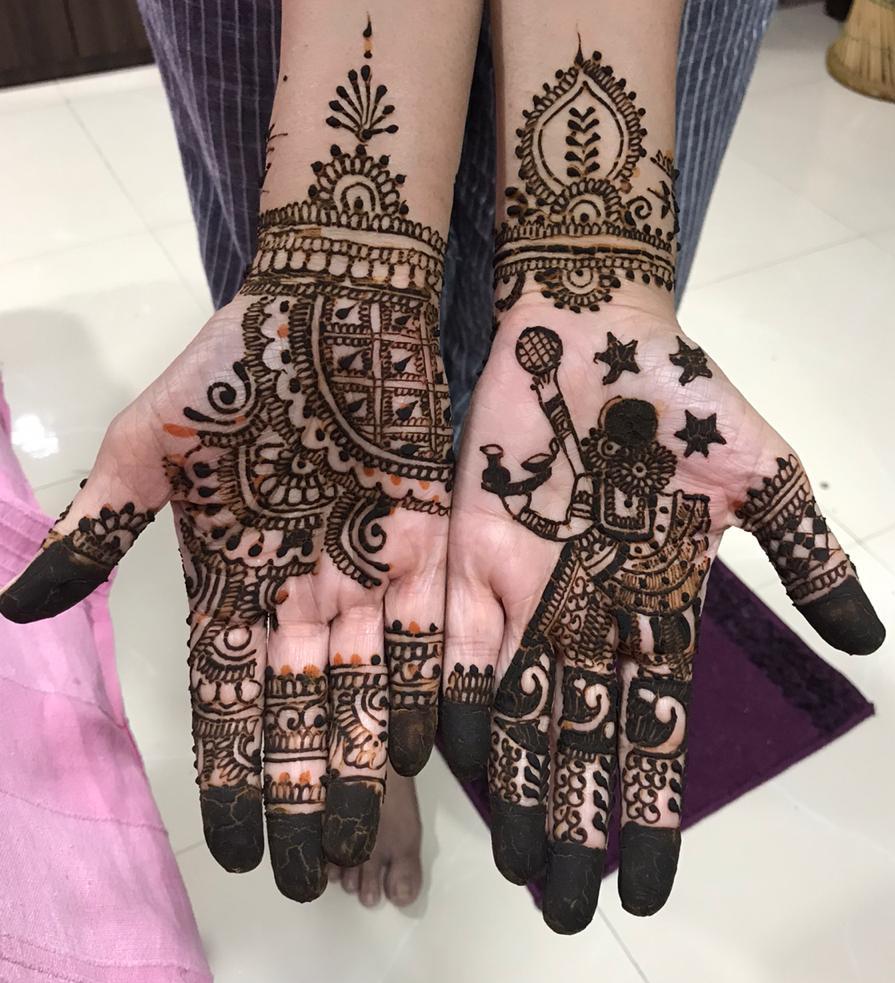
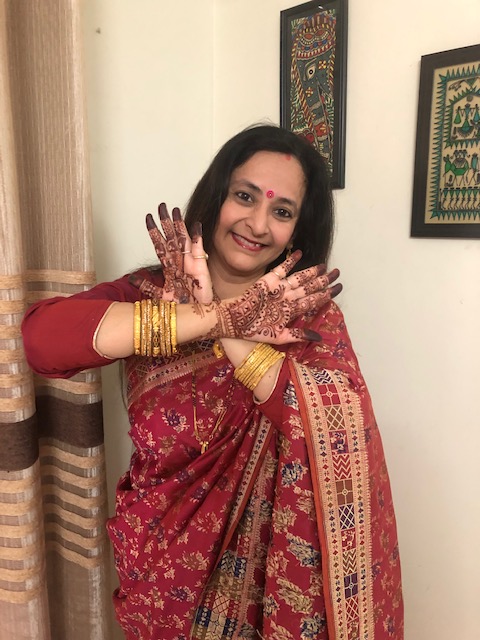


The women would then visit each other in their finery or ‘solah shringar‘ on the day of Karva Chauth and exchange these karvas. ‘Solah Shringar’ means 16 Bridal Adornments that involve in the beautification of a bride from head to toe at the time of wedding. They are as follows:
- Bindi (on the forehead)
- Sindoor (in the parting of hair)
- Maang Tikka (a jewel that adorns the centre of the forehead)
- Kajal (Kohl in the eyes)
- Nath (nosering)
- Haar (Necklace)
- Karna Phool (earrings)
- Mehendi (Henna)
- Choodiyan (Bangles)
- Aarsi or Haathphool
- Keshpasharachana (Hair accessories)
- Kamarband (waist accessory)
- Payal (anklets)
- Bichuas (toe rings)
- Ittar (Perfume)
- Shaadi ka joda (Bridal dress)

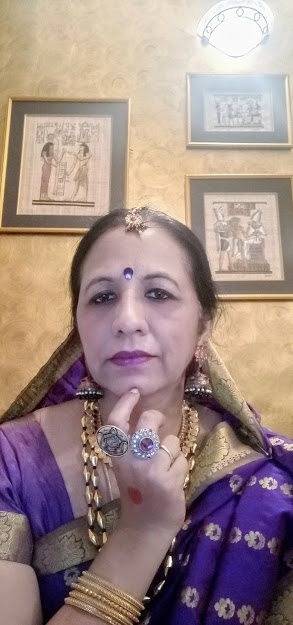
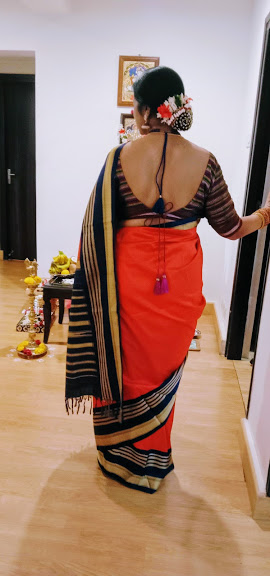
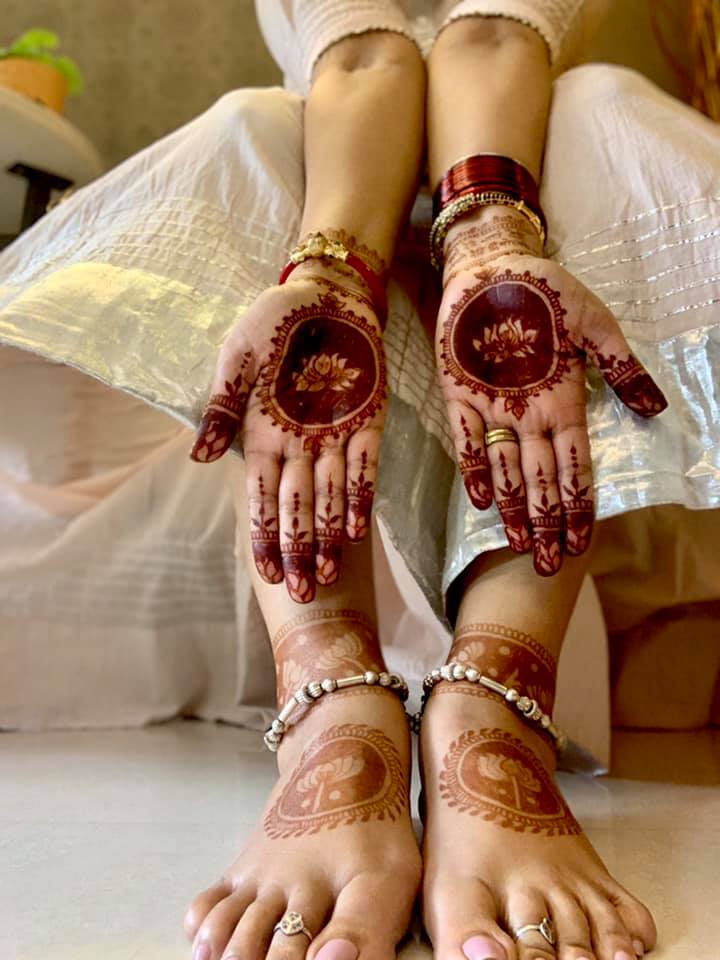
On the day of Karwa Chauth, the day begins at dawn with a meal called ‘Sargi‘. This pre-dawn meal is consumed after taking a bath and offering the first prayers to the Almighty. The Sargi is a wholesome meal as it consists of items made from wheat, rice, milk, fruits, dry fruits, and coconut water. This meal would keep the body energised for the whole day.

After the pre-dawn meal, women take part in spiritual activities and later in the evening, perform the puja before sighting the Moon. Subsequently, after seeing the Moon through a sieve, and then catching a glimpse of their husband through it, women break their fast. Usually, the husband helps his wife break her fast by giving her a glass of water.
Since the day falls soon after harvest, it is an excellent time to celebrate and meet one another and exchange gifts. During Karva Chauth, parents would also send gifts (e.g., grains, food items and new clothes) to their married daughters and their children. Quite obviously, Karva Chauth is a day to celebrate sisterhood.

Says Kavita Lohiya Bajpai, “It is my my strong belief that every festival in India has a strong base and reason, and regional stories were later added in course of time. In the end it is all about faith and individual belief systems.”

I present a beautiful Hindi poem penned by Mrs. Sindhu Rawal describing the day, where she describes the moon being jealous of the beautiful ladies in their ‘solah shringar‘ and enjoying their sisterhood, despite having her own radiance. The poetess urges the moon not to be jealous and hide behind the clouds. She tells the moon that while the ladies do love their husbands over anyone else, they still look at you first before breaking their fast. So come out and bless them so that they live together with their spouse happily for a long time.
“Chaand Aasman se dekh aaj jal toh zarur raha hoga..
Solah shringar kar saji, meri sakhiyon ko dekh woh machalta toh zarur hoga,
Apne par lagey kaale daag se woh khoobsurat lagta zarur hoga.
par ek suhaagan k haatho ki mehndi ki lali ka rang uss par bhari toh zarur padta hoga,
Beshak apni chandni ki chamak mein woh itrata hoga magar, apne sajan k pyaar ke rango se chamakati ek sajni ka Noor se pheeka sa zarur padta hoga,
Aye Chand na jal tu inn saubhagyavatiyon se, na sataa tu yun chhup chhup ke,
Hongi woh apne sajan ki sajni pur deedar toh pehle tumhara hi karti hai sabhi,
De ashirwad k sadaa suhagan rahein yeh aur saath ho wahi sajan janamo janam” – Sindhu Rawal

Here is another beautiful poem this year (2022), by Mrs. Aparna Ghosh, dedicated to her spouse and the feelings she has for him. Love is indeed in the air!
तेरी जुस्तजू ने जैसे संवारा हैं हमको,
तेरी बेरुखी ने फिर बेज़ार किया है,
तुम हँस दिए तो खिल गई मेरी दुनिया,
तुम्हारी चुप्पी ने दिल पर वार किया हैं।
हमने भी चांद का इंतजार किया है,
तेरे दीदार को दिन से रात किया है,
ख्वाहिशें जो थीं बेमाइनी सी पहले,
तेरी मुहब्बत ने उन्हें दरकार किया है।
“Hamne bhee chaand ka intezaar kiya hai,
Tere deedaar ko din se raat kiya hai,
khvaahishen jo theen bemainee see pahale,
Teri muhabbat ne unhen darkaar kiya hai.
Teri justajoo ne jaise savaara hain hamako,
Teri berukhee ne phir bezaar kiya hai,
tum hans diye to khil gaee meree duniya,
tumhaari chupee ne dil par vaar kiya hain.” – Aparna Ghosh, October 2022
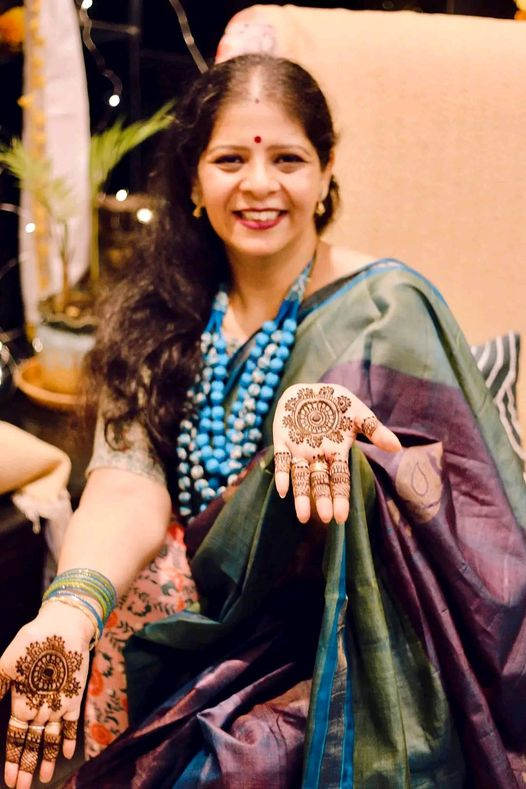
And another poem titled “Tum aur main .. hum” by Dr (Mrs). Nately Puri Narayanan, where she describes the unique relationship that she shares with her spouse. Absolutely heartfelt and beautiful.
Thoda khatta sa , thoda meetha sa humara rishta .
Kabhi nok jhonk , kabhi pyaar , kabhi thoda ruthna aur phir manana …
Kabhi dher saari baatein karna aur kabhi yoohin chuppi mein sukoon paana .
Tum angrezi dhun likhte ho aur gungunate ho , tumse prerit hokar main koshish karti hoon kuchh Hindi mein likhoon .
Tum chakit kar dete ho mujhe , Hindi mein kuchh likh kar … aur main jut jaati hoon angrezi mein likhna .
Tumhari lambi umr ki kaamna karti hoon aur tumhari muskurahat pe dil de baith thi hoon .. har baar … har din aur har karva chauth pe . Chaand dekhna to ek bahana hai , sach mein to tumhe dekhti hoon .. ektak .. baar baar, us chhanni se .
Tum aur main … hum … yoohin saath saath … hamesha .” Nately Puri Narayanan, 2022
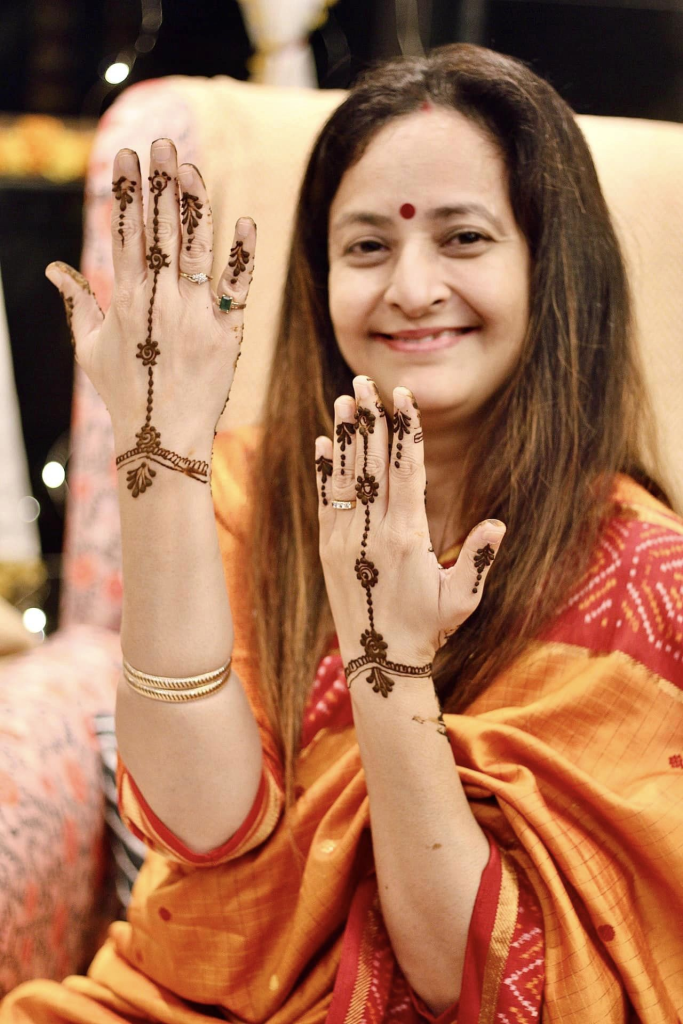
(Note: If you liked the article; do press the star button below! If you have not followed the blog yet- do subscribe by pressing the follow button or registering with your email. I would also love to hear from you. Thank you)
(Note: Please do not download any pictures without permission. Thank you)
Beautiful article Sangeeta. So simply but very well explained. Thanks for featuring my poem, feel honoured.
LikeLiked by 1 person
Totally my pleasure!! Sindhu.
LikeLike
Such a lovely article and adorned with inputs from these darling girls ,it’s a delight go read
LikeLiked by 1 person
Hare Krishna for ever 💐🙏🌹
LikeLike
Hare Krishna!
LikeLike
Well written article. Indian culture is really amazing, we celebrate so many festivals in different traditions. Karvachauth is another important festival for married women. You have covered almost everything in your article. It was great to read. Keep sharing more!!
LikeLiked by 1 person
Thank you Sneha! 🙂 Have just shared an article about Chatth Puja today. Please do follow my blog for automatic notifications !
LikeLike
Pingback: March 2021- Transit of Planets | sojourn-with-san
Reblogged this on sojourn-with-san and commented:
I had written this piece in 2020. This year, it has been updated with two more poems on the occasion of Karwa Chauth. Hope you all enjoy the read.
LikeLike